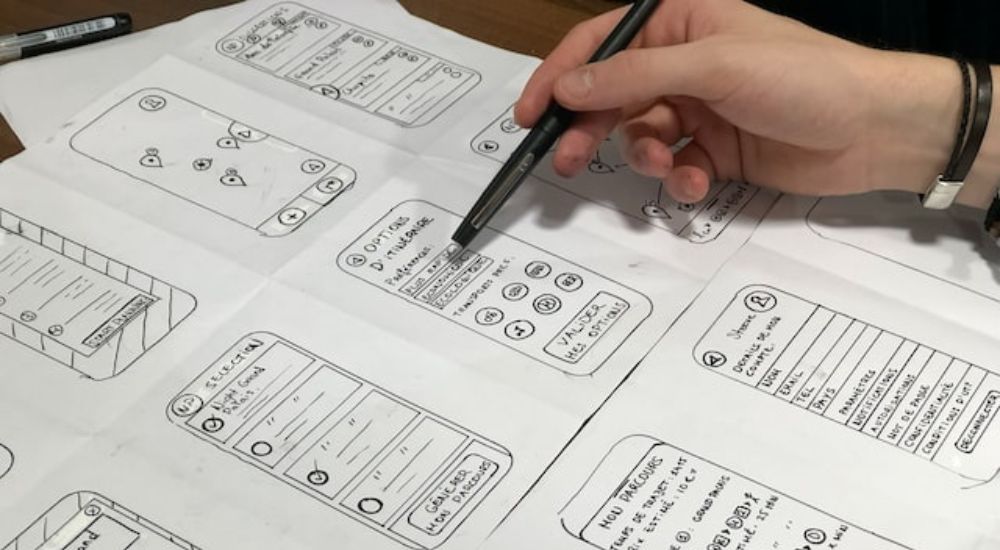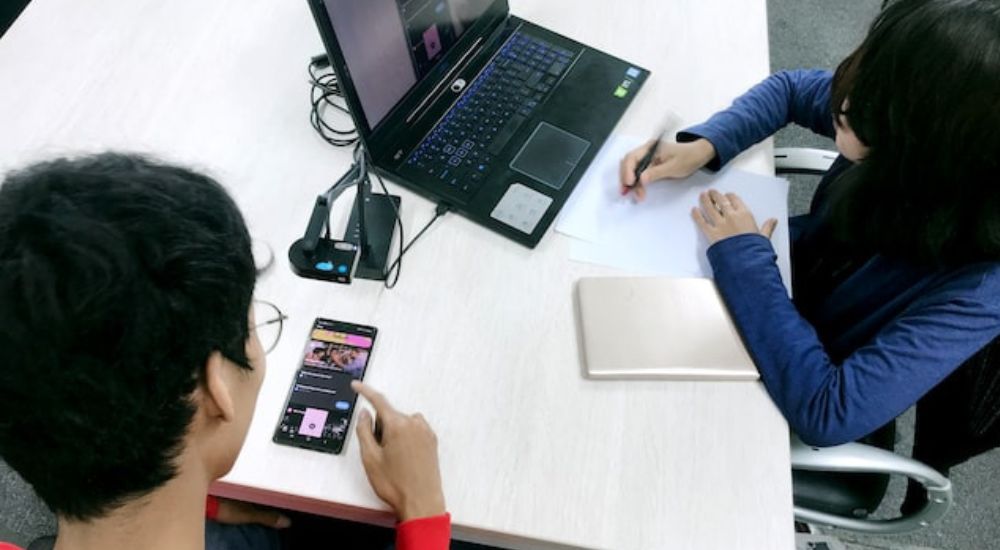With billions of downloads worldwide and players of all ages, it’s no secret that mobile games are super popular nowadays. It’s not hard to see why: we keep our phones within arm’s reach, so playing short gaming sessions on a phone is convenient no matter where you are. Also, boasting an impressive variety of games, there’s always one for every kind of player out there.
The global mobile gaming market is so massive that Statista projects its revenue to reach over $150 billion in 2022. With such enormous profit potential, it’s no surprise that everyone – from independent developers to big-name studios – wants a slice of the pie.
With so many games out there, a fundamental question arises: how to make good mobile games that will stand out from the crowd and delight your players? This is exactly what we will explore in this article!
Do your research
Conducting market research is an essential first step in the process of creating a good mobile game. Understanding what types of games are popular in the mobile game market – as well as their core traits – makes it possible to identify trends and opportunities that can help you create an even better game.
Among the many things you will need to consider, some important ones include your target audience, your game’s features and mechanics, and your game’s genre.
However, we understand that the gaming market is saturated. Generally speaking, creating a clone of another successful game doesn’t mean your game will attain the same level of success. If you’re working on a small budget, for example, avoid competing with the big names out there and create a game in a niche of your choice. To each their own, though.
Plan your monetization strategy thoroughly
Remember that games are products as well – so another vital component of mobile games is their monetization, which is how most games generate revenue and sustain themselves. To help you get started, ask yourself the following questions:
- What type of monetization model will I use in my game? Will the game be a free-to-play (F2P) with in-app purchases (IAPs), a premium paid game, a subscription-based game, or something else?
- What in-game items or features do I intend to offer for purchase? Many F2P games offer starter bundles and an IAP to remove all ads permanently (usually for a low cost) for example;
- How will I balance the need to generate revenue with the need to create a fair, balanced, and enjoyable gaming experience for players regardless of how much they spend?

Make your game stand out from the rest
As we said before, developers and studios release thousands of games every year. Even if you have a good mobile game in your hands, it won’t matter much if you can’t stick like a sore thumb from the rest. This can involve offering unique game mechanics or features, a distinctive art style or storytelling approach, following a good marketing strategy, or anything else that sets your game apart.
Design matters!
Even though unique game mechanics often attract more attention, you don’t need to reinvent the wheel to make a good mobile game. Sometimes, all it takes is giving a tried and true game formula a little twist and dressing it up with visually appealing game assets. Think of it as taking a classic recipe and changing something slightly to make it your own or to suit your taste better.
User Experience (UX) is paramount
The user experience (UX) of a mobile game is also critical to its success. From the get-go, players should be able to download your game, open it up and play it with no problems whatsoever. The controls should be easy and intuitive to use, the user interface (UI) should be clear, the shop shouldn’t feel unfair, ads should be non-intrusive, it shouldn’t take more than 3 taps to perform important functions in the game, and players should generally know what to do or where to go next.
Furthermore, make great use of feedback and rewards to keep players engaged and motivated – it’s like patting your players on the back every time they do something right. You can also create quick and interactive tutorials for the core game mechanics, which helps ease players into your creation. Trust us, players more often than not will appreciate some guidance and positive reinforcement.

KISS design principle
Short for “keep it simple, stupid!” (or “keep it short and simple!”), the KISS design principle states that the UI design should be kept as simple as possible. The screen space on a phone is already limited, so it’s better to avoid visual clutter and complex interfaces from the get-go. Scaring your players with dozens of buttons, menus, and information does not make for a good first impression, right?
All in all, it doesn’t matter who your target audience is: making your mobile game easy to understand is crucial. You surely don’t want to make people feel like they’re solving chess puzzles just to perform a single action. If it’s too frustrating, people will probably run away from your game instead of coming back to it.
Remember: keep it short and simple!
Test and iterate your game extensively
Despite everyone’s best effort, no game is perfect on the first try. This highlights the importance of QA (quality assurance) testing your game every time developers implement new features. It’s much better to catch issues early than find them out after the game is released.
Generally speaking, going for short development cycles and making small but iterative changes is the way to approach game development. Otherwise, you risk putting too much time, effort, and money into a feature that might not work at all for your game.

Get social: build communities and use social media
Social media usage is at an all-time high – according to Statista, we spend an average of 147 minutes daily on social media. Companies and influencers build and maintain a community of followers to increase their awareness and revenue, and so should game developers.
You can use social media, forums, a Discord guild, a subreddit, or any other online platform to connect with players and foster a sense of community. Another way to approach this challenge is to create in-game events or features that encourage players to interact with each other and build meaningful relationships.
Be ready to help your players should any problems arise
It’s important to be ready to help your players out should anything happen. It’s unfortunate, but issues arise no matter how well you test and optimize your game. It might be an incompatibility with an older device, it could be a minor bug that slipped past QA, or it could be something more severe that can negatively impact the user experience. And when it happens, your players will try to contact you for help.
Not only that, but listening to your players’ feedback is crucial to creating a good mobile game; they’re the ones who will be playing the game after all. Your team might have envisioned the perfect game, but something could be amiss from the players’ perspective. Maybe something is too hard, too easy, or it’s so boring they’d rather watch paint dry. Likewise, navigating the UI might feel too confusing for new players.

Mastering the Art: How to Make a Mobile Game
In the world of mobile game development, creating successful mobile games requires a combination of strategic game design, effective monetization, and utilization of the right development tools. To make a mobile game that stands out in the app store, start by understanding the mobile gaming industry landscape and the types of games that are popular among users.
Choose a game engine that supports both Android and iOS platforms, like Unreal Engine or other mobile engines. These engines offer a versatile and user-friendly way to develop games. Throughout the game development process, ensure your game is well-designed, easy to play on mobile devices, and has a clear monetization strategy. Utilize app marketing techniques to promote your game and increase app growth.
By learning from the best practices of experienced game designers and developers, you can navigate the complexities of mobile game app development and launch your game successfully on app stores like Google Play and the Apple App Store. Whether you’re a seasoned game creator or new to mobile game development, this ultimate guide provides tips and insights to help you build captivating mobile games that players will love.
Need help creating your upcoming mobile game?
As you have seen in this article, creating mobile gaming masterpieces is a tough task: from research and QA testing to building a community, there are many steps involved in creating great games that will endure the test of time.
Feeling overwhelmed by the idea of creating a game mobile game? No worries: Main Leaf is here to help you out! We are a professional game development studio with over a decade of experience, and our roster of 70+ passionate professionals is ready to take on the development of your upcoming mobile game. Our blazing-fast development speed is sure to leave you impressed!
If you’re interested in working with us, don’t hesitate to request a game quote right now. Don’t worry – we’ll get back to you in 24 hours!

